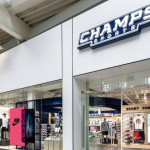Hyperlite Mountain Gear achieved an important milestone last week in its quest to bring ultralight gear to the masses and manufacturing jobs to Maine.
The company’s co-founders Mike and Dan St. Pierre closed on the company’s first round of outside equity funding and secured debt financing needed to bulk up marketing and product development.
The Main Venture Fund, which was created by the state legislature in 1997 to “invest exclusively in Maine companies that demonstrate a potential for high growth and public benefit,” partnered with Telluride Venture Fund and private investors to make an undisclosed equity investment in the company. HMG’s hometown bank – Biddeford Savings Bank – provided the debt financing.
“We have been bootstrapping HMG for the past five years and while we have made great strides in our development, they have often been limited,” said Mike St. Pierre, Hyperlite’s CEO and 2013 graduate of the Telluride Venture Accelerator’s residency program. “This investment means that we will be able to accelerate our growth by further investing in marketing, product development and staffing. And we envision this acceleration to eventually position Hyperlite Mountain Gear as a one-stop-shop for high-tech ultralight gear regardless a users core outdoor activity.
HMG has carved out a niche using a non-woven, rip-stop, composite laminate called Cuben to make ultra-light backpacking gear. Mike St. Pierre discovered the material in the mid-2000s, while searching for materials to lighten his load during treks to the Adirondack Mountains. Though the material was developed in the 1990s and is named for its use in the sails of a yacht that won the America’s Cup, St. Pierre learned that it was ideal for making lighter, stronger and more durable backpacks, shelters, stuff sacks and other outdoor gear. He quit his job as a chef in New York City and moved to Biddeford to start sewing packs. His brother Dan, a graduate of the Wharton School of business with 20 years of experience corporate finance and start-ups, to join the company as CFO in December, 2009.
HMG defines its mission as becoming the “Leaders in Lightweight” by embracing material technology innovations and a minimalist design ethic. The company’s backpacks, have been praised by Backpacker, Climbing and the ultralight blogosphere, but the St. Pierres have their an eye on a larger opportunity.
“We really believe that while often considered a niche to be tracked, this ultralight market is actually the whole outdoor market,” he told The B.O.S.S. Report Friday. “We really see it more as a very natural momentum in the way people are engaging in the outdoors. There are many customers who have us right up with the big traditional brands when making purchase decisions. So now we consider anyone making products that are appropriate for the activities were addressing to be competitors.”
HMG unofficial second mission – helping bring manufacturing jobs back to Maine – has also won it accolades. In an article published by the Portland Courier Journal last March, Biddeford boosters praised HMG for spearheading a renaissance in manufacturing after it relocated to a larger space at the town’s Pepperell Mill Campus in March and pledging to add 25 to 30 jobs by end of 2017.
“We actually make our entire product line, except for the tent stakes we sell, from raw material to finished good,” he said. “We are in a 150-year-old, million-square- foot, textile mill in Southern Maine. Theres a rich history of textile manufacturing here and it all shut down and went overseas over the past twenty years. Fortunately there are still some very experienced and skilled stitchers here and we have been very fortunate to find a fair amount of them.”
HMG sells direct via its website and through independent specialty retailers in about a dozen states and several European and Asian countries.
“We welcome new retail partners now, particularly specialty gear shops in geographically strategic areas, but we also have premium priced products that are still in the early adoption phase of the market,” he noted. “Bigger and more traditional partners are still waiting to see how Cuben fiber plays out over the next few years. And maybe theyre waiting to see how HMG progresses over the next few years too.”













